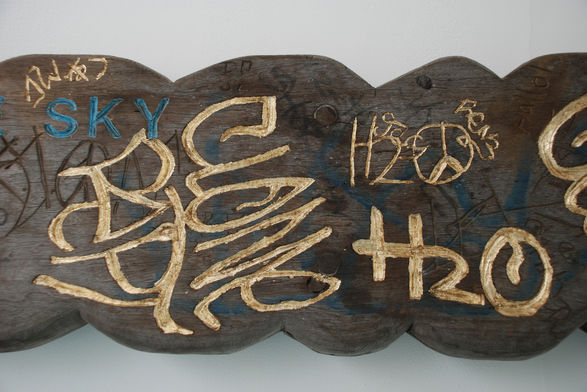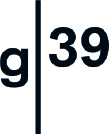Bystanding
21 August - 25 September 2010
Lauren Elizabeth Jury, Will Woon, Mark Folds

Mark Folds, from ILovePeckham
G39 brings together new works by three artists who use common elements of observation, speculation and the re-enactment of events within a gallery context. For Bystanding, Lauren Elizabeth Jury, Will Woon and Mark Folds use different strategies to mediate and re-present us with a mixture of tragicomedy, empathy and hope.
‘Bystander’ often refers to passive witnesses or to innocents that get swept up in events. There is a phenomena known as the bystander effect in which it was seen that the more people that witness an incident, the less likely they are to respond, that each individual assumes somebody else will or that a response isn’t necessary if no-one else acts. For this show the word moves from noun to verb and the act of observing and responding is the focus; it fits the artists in this show more accurately; bystanding, or ‘standing by’.
Mark Folds is a public artist in the widely understood sense, responding to commissions for street furniture or sculptures. But he also has a shadow activity that started with a project called I love Peckham in 1996. For this project he focussed the destruction or neglect of other people and began fixing or transforming things, small acts changing bigger things. This practice has continued since he moved to Wales. His work, as he puts it, injects 'a slight wobble into the everyday'. He makes 'outstallations'. By making small physical changes to a place, Mark anticipates a change in his audiences' perceptions. By sowing subtle visual seeds, he encourages us to look again, to re-think and re-engage with our environment. His work triggers questions about commonly held and learned perceptions; by turning these on their head he offers an alternative way of seeing.
Lauren Elizabeth Jury is in the process of producing a photographic study of George Cole of Treherbert, who worked on the Rhigos Road until 1992. George was responsible for the appearance of the floral roadside decorations outside the “White House” workman’s hut. His duties were to keep the road clear of debris from the stones falling from the mountainside and amused himself in quiet moments by creating flowers, windmills, miniature houses and animals from various materials for his ‘decorative garden’. From her position - observing an outsider artist reinventing the world he finds himself in to make it better, never intending gallery/ art connotations but making a deliberate and creative change she introduces an empathy with this character in the landscape. The scale of the mountain and the abject quality of some of these sculptures echoes the work of Will Woon.
Will’s practice is peopled by miniature models, like architectural maquettes or proposals for future sculptures. Often characters (where they are identifiable) are seeking or addressing an audience, they involve podiums, lecterns or speeches or he presents buildings that are fragile and at points of precariousness or collapse. This miniature world has more in common with animated characters than the conventional modelmakers Hornby suburbs. Wills work is very much rooted in a gallery tradition with references to antiquities of classical statues, but the gallery becomes both the setting expanded world over which he presides. Like the subject of Lauren’s photographs or like Mark, Woon builds a world in which his own creativity shapes the way we negotiate it and understand it as a place in which multiple narratives are allowed to play out.
- The following Artists were in this show:
- Lauren Elizabeth Jury
- Mark Folds
- Will Woon













